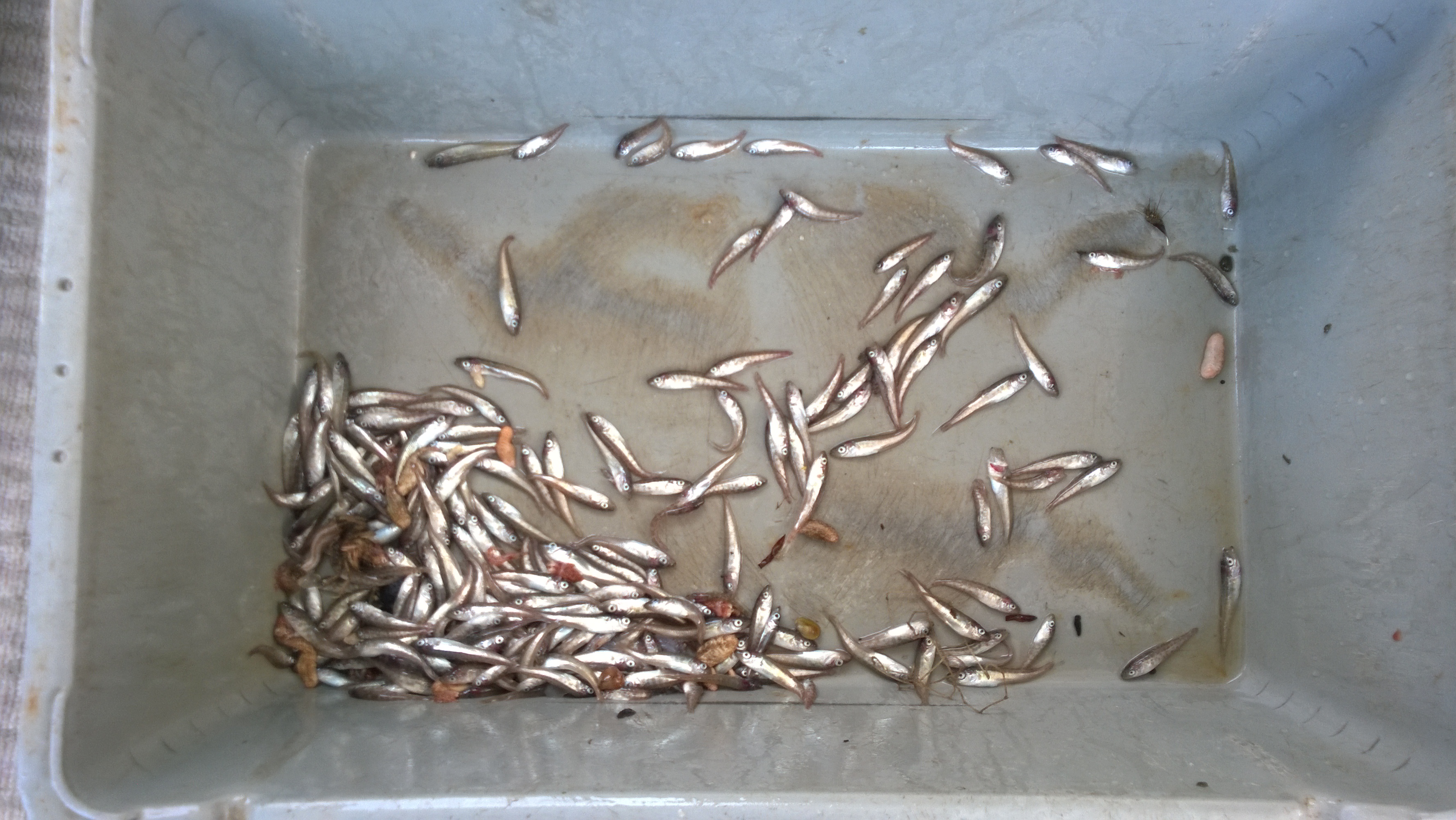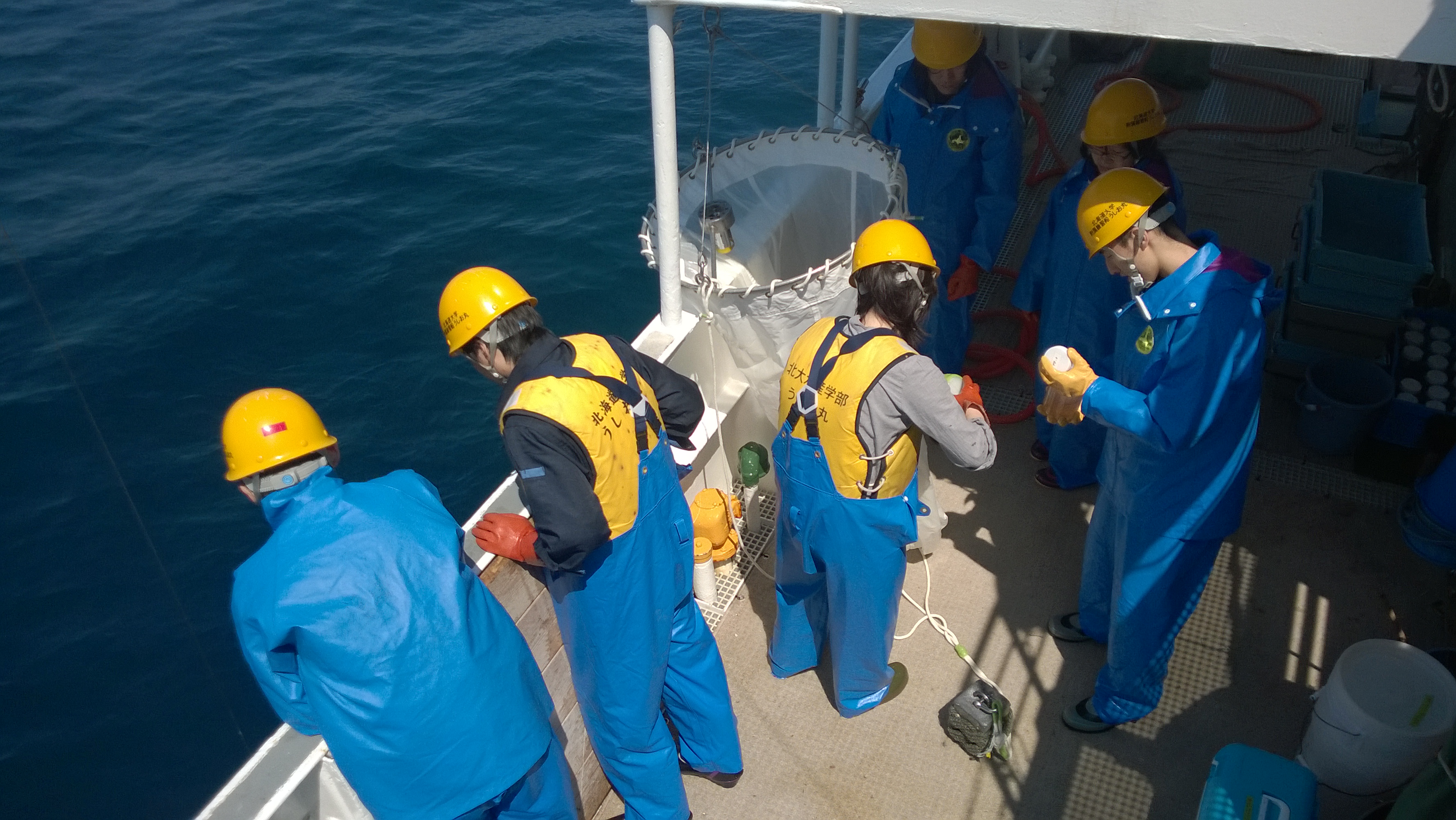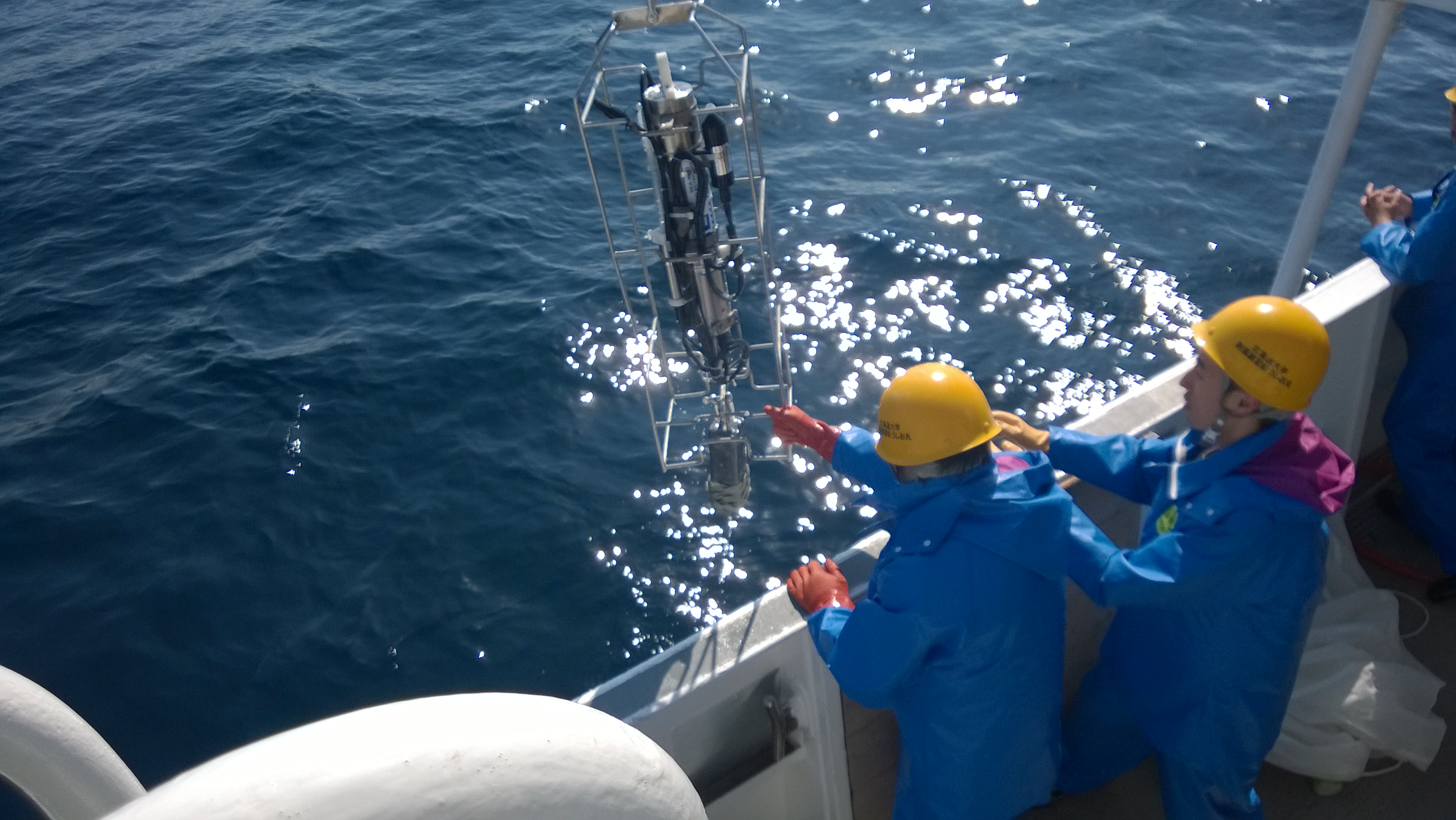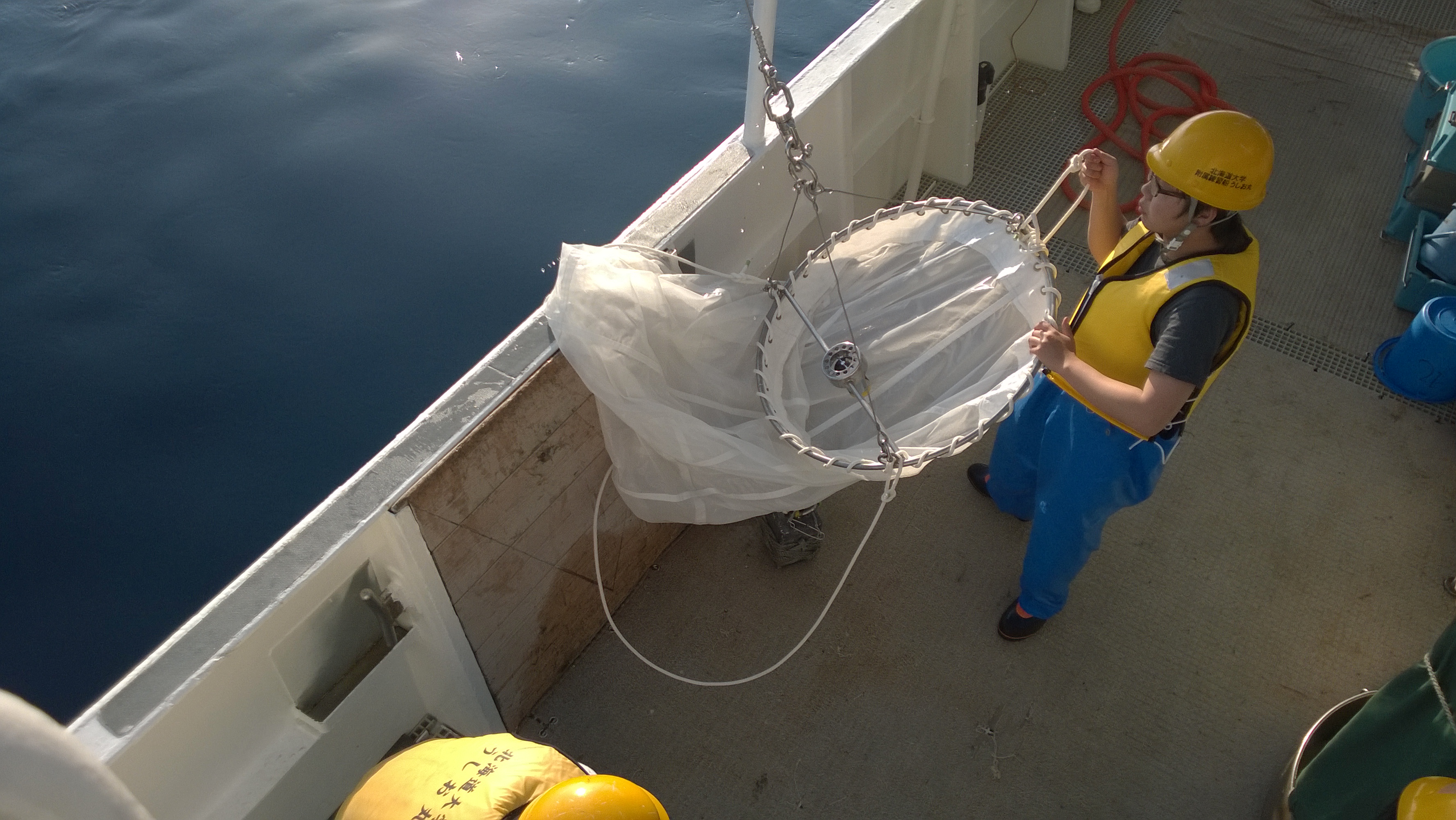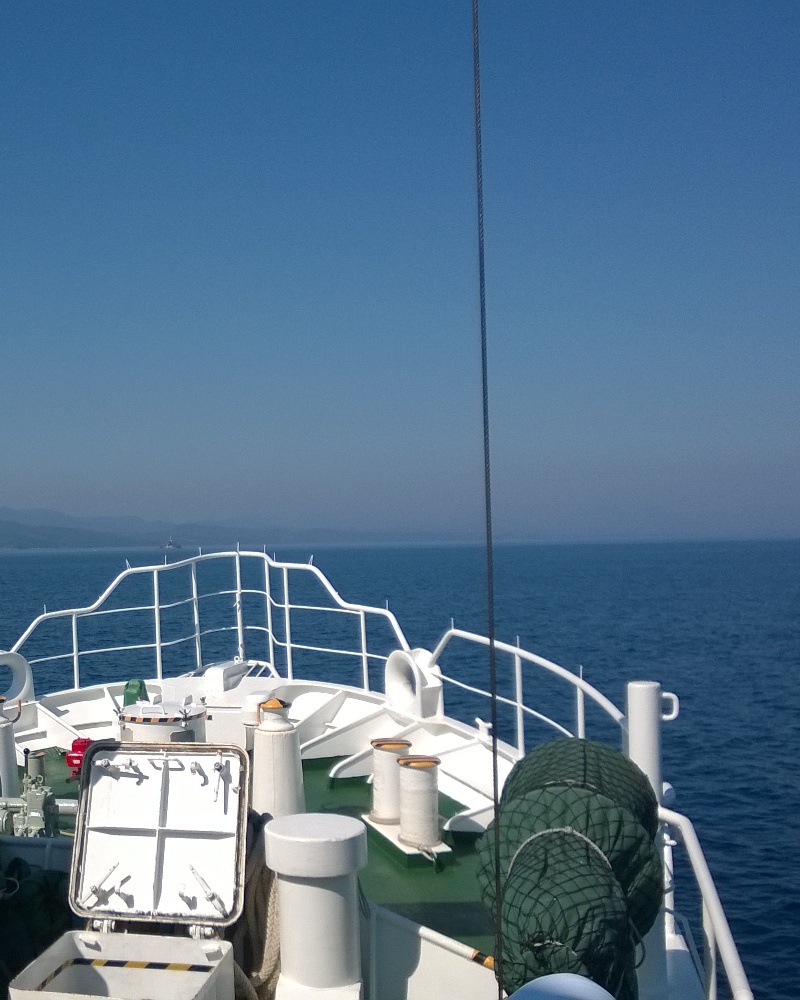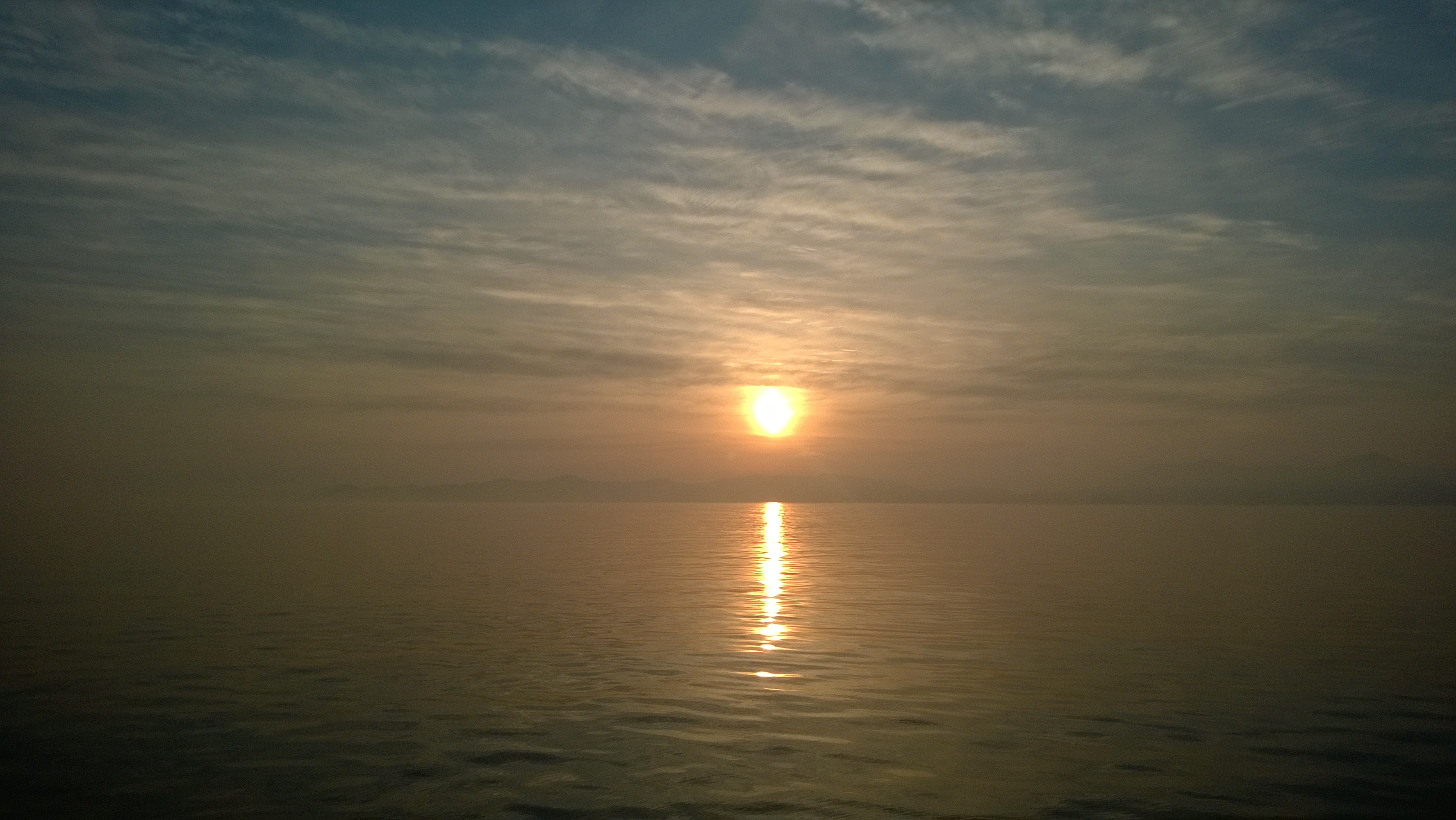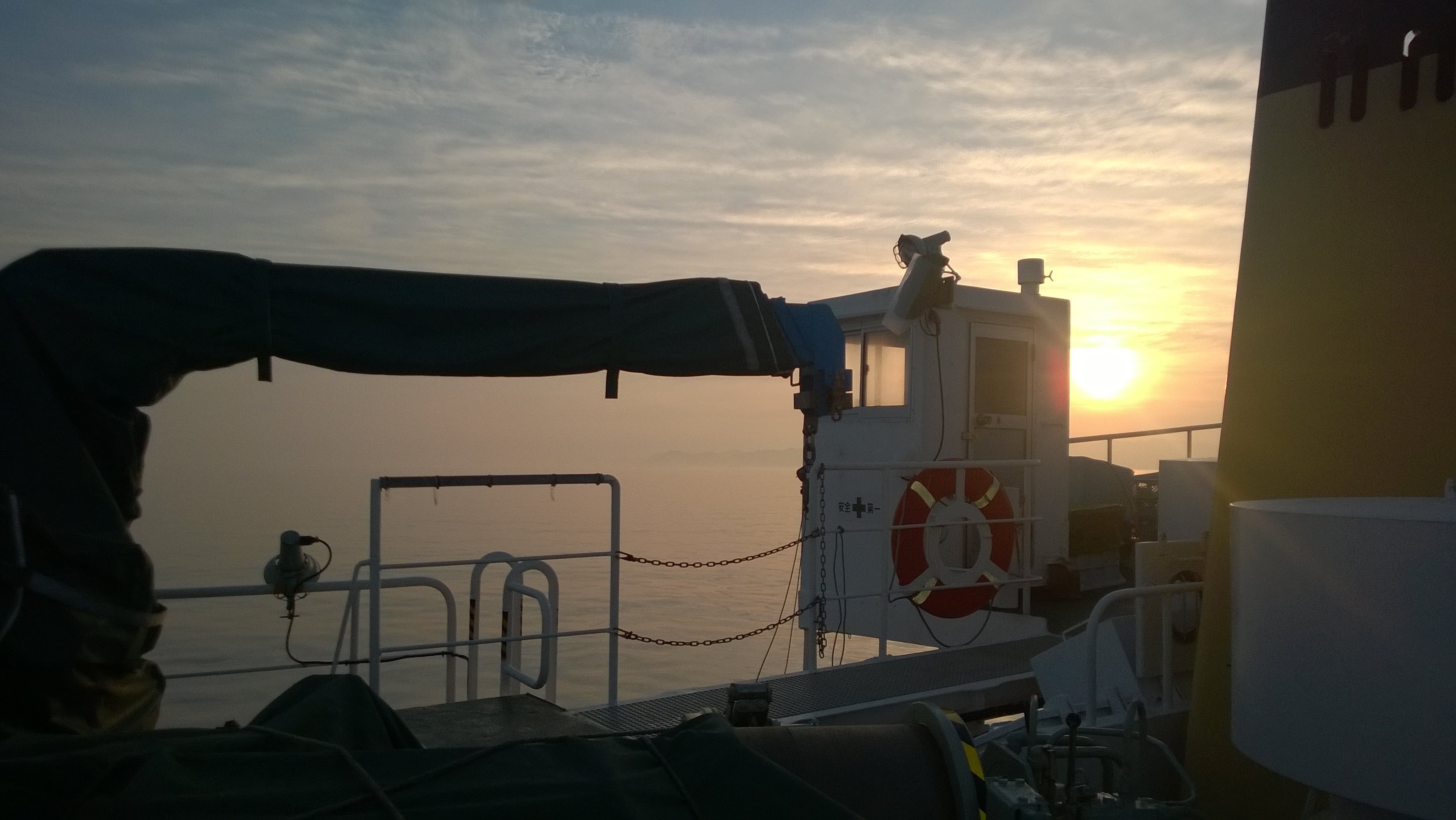Practice Contents
A. Measurement of water
temperature and salinity (all sampling stations)
Water temperature and salinity are measured from just above the seafloor to the
sea surface using a CTD. The CTD used in this practice is a data storage type,
so data retrieval will be conducted after the end of the day's work.
B. Measurement of surface water temperature (all sampling stations)
Sea surface water is collected with a special bucket and discarded. Repeat this
process 2-3 times to eliminate the difference between the bucket temperature
and the surface temperature. Collect more water, insert a stick thermometer and
leave it in the shade until the temperature stabilizes (about 1 minute), and
read the water temperature. Leave the backet for another about 1 minute and
check that the temperature has not changed. If it has changed, measure the
temperature again after another minute.
C. Collection of fish larvae and zooplankton by vertical hauls of a ring net
(all sampling stations)
The ring net is towed using an observation winch, and lowered to 3 m above the
seafloor and retrieved at a speed of 1 m/sec. After recovery, the specimens in
the bottom tube are first transferred to a sample bottle (1 L) before washing
the net to minimize damage to the animal specimens. Animal specimens are added to
buffered formalin solution to achieve a final concentration of 5% in the
preservation solution. Remember to record the flowmeter rotation rate in the
field notebook. Calibrate the flow meter will be done at the last observation station
(3 or 5 times from 0 to 20 m).
D. Collection of demersal fishes with a trawl net (trawl-net stations)
Demersal fishes will be collected once or twice at each of the 8 stations. All deploying
and hauling of the net will be conducted by the teacher and crew, with student
participation to the extent that it is safe to do so. Species identification,
counting, weighing, and recording of fish, cephalopods, and large-sized crustaceans
collected. Major fish species (designated by the teacher) and unidentifiable
organisms will be frozen or preserved in ethanol solution and brought back to
the laboratory for accurate identification.
E. Fish measurements and age assessment (after completion of field samplings)
After arrival or disembarkation, students will measure total length, standard
length, weight, sex, gonad weight of major fish species and collect otoliths. If
stomachs are fixed and preserved, record the amount of formalin used for
chemical control. For otoliths of Pleuronectiformes (flatfishes), the otoliths
will be preserved in a microplate filled with fresh water, and their ages will
be counted on the same day. Students will count and record the number of outer
edges of the otolith transparence zone.

